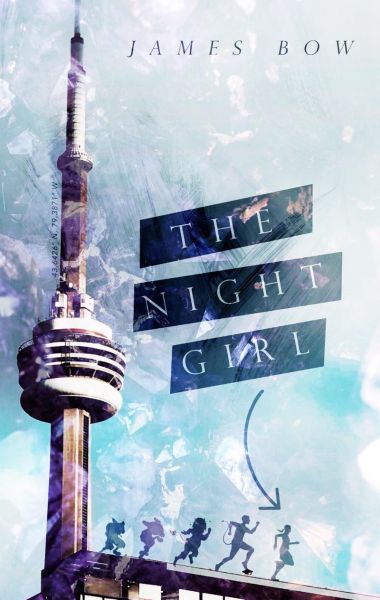A Neighborly Day
The Night Girl
By James Bow

25 Feb, 2020
0 comments
James Bow’s 2019 The Night Girl is a standalone urban fantasy.
Perpetua Collins emigrates to Toronto with five hundred Canadian dollars in her pocket and high hopes. Her quest for work proves challenging; she is reduced to homelessness.
Then Toronto entrepreneur Earthenhouse offers the young woman a job. She has an edge over other applicants in that she did not run screaming from the office when she saw her potential employer. Few modern Torontonians are used to dealing with goblins like Earthenhouse.
Goblins, elves, trolls, and other fey races have lived in humanity’s shadow for three thousand years. Accepting that they cannot defeat humans, the supernatural folk, in particular the goblins and trolls. have instead done their best to avoid being noticed at all, a goal aided by a magical veil that prevents most people from noticing the odd folk among them1. Few humans can pierce the veil without extreme provocation. Perpetua’s ability to see what’s around her is unusual.
Perpetua has to deal with magically enchanted office equipment, but most of her job as administrative assistant is par for the course. It’s merely the clients who are a bit odd. They are, however, people, and she soon becomes fond of them.
Earthenhouse provides his people with employment or a facsimile thereof . It’s a rare opportunity. Thousands of the fair folk flood into Toronto seeking employment. How precisely Earthenhouse is finding his folk jobs in a world filled with judgemental humans little inclined to employ odd-looking applicants is a good question. So is “what will happen when there are enough trolls and goblins in Toronto for the Veil to fall and humans notice what’s all around them2?”
Elves are the elite of the fair folk society. They maintain the masquerade that protects their people from humanity’s baleful gaze. Earthenhouse is, however unwittingly, threatening thousands of years of veiled security. He intends to help his people to escape poverty and misery, but his plan has consequences he did not foresee and that the elves emphatically do not approve. Action must be taken.
And if Perpetua gets in the way? Too bad for her.
~oOo~
It seems that the owners of the CN Tower don’t want their edifice featured on book covers.
The author paints a sad picture of the state of government in Toronto. This is all too accurate. Thanks to the forced amalgamation of Toronto with its surrounding suburbs and exurbs, the electorate is dominated by suburban chuckleheads. The author, James Bow, worked on this novel for eighteen years. During this time Toronto lived under such mayors as Mel Lastman (who was astounded to discover it snows in Canada) to Rob Ford (words fail). If the current mayor, Tory, seems competent, it is only because he was preceded by complete buffoons. The government in this novel is a Fordian one.
Still, it must be admitted that the author takes a more positive view of Toronto as a whole than is typical in Canada. It’s odd, given that Ontario’s economy would fall down like a lung-shot calf if Toronto vanished, but the one thing that unites Canadians is hating on TO. Odd. It’s not like it’s Galt.
It’s a measure of how completely the humans dominate that the goblins and trolls accept without question that they’re ugly. Human standards rule. Or rather, a northern European standard. No one seems to have embraced Goblin is Beautiful. Even Earthenhouse seems to have bought into human beliefs about goblins. He wants to help his fellow goblins, but he isn’t moved to socialize with them. If he had, they might have pointed out the problems with his grand plan.
This book isn’t quite sure what kind of book it wants to be. On the one hand, it could be a YA, a cheerful book about a young woman discovering herself in the big city. On the other hand, it could be a sombre book in which an attempt to help one’s people threatens to end in ethnic cleansing. We don’t go there (quite), but even the threat is a bit of downer.
I couldn’t quite make all the dots of Earthenhouse’s plan join up, but I enjoyed Perpetua and her friends. Plus, it’s a pleasant change to read a book in which Toronto appears favourably.
The Night Girl is available here (Amazon US), and here (Amazon Canada). I could not find it at Amazon UK, Book Depository, or Chapters-Indigo.
1: Try not to think about the ominous implications of the ability of the fair folk to control human perceptions, on a national or possibly even a global scale. What would happen if human governments learned that such manipulation was possible?
2: Curiously, the novel does not go into detailed demographics — there isn’t even a single Excel spreadsheet! — but adding twenty thousand goblins and trolls to the population of Toronto (2.93 million as of 2017) is said to be enough to seriously bend the veil. That seems to suggest that any fey folk population larger than one percent of the human population is going to wreak havoc on the veil.
I had a lot of questions about the evolutionary past of magical hominins that this novel did not answer.
